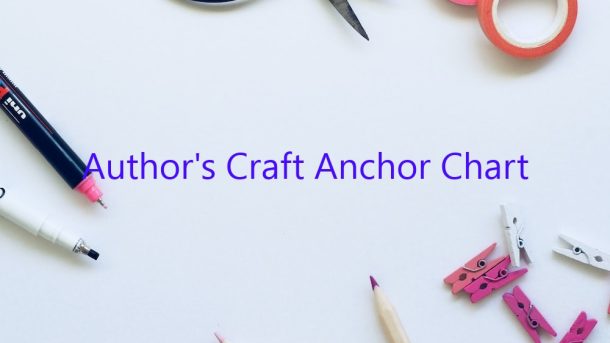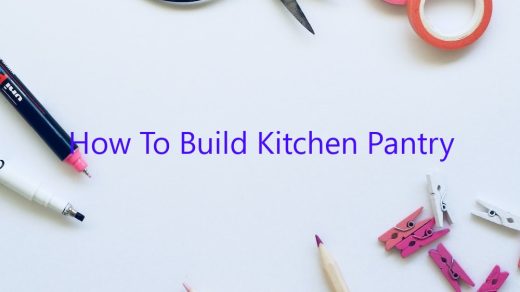An author’s craft anchor chart is a tool that can help writers understand and use the techniques of effective writing. The chart includes a variety of elements that contribute to strong writing, such as point of view, tone of voice, and word choice.
The point of view of a piece of writing is the perspective from which it is told. There are three main points of view: first person, second person, and third person. First person point of view is told from the perspective of the narrator, using “I” or “me.” Second person point of view is told from the perspective of the reader, using “you.” Third person point of view is told from the perspective of an outside observer, using “he,” “she,” or “they.”
The tone of voice of a piece of writing is the attitude of the narrator or author toward the subject. There are three main tones: positive, negative, and neutral. Positive tones are enthusiastic and optimistic, negative tones are angry and bitter, and neutral tones are uninterested and objective.
The word choice of a piece of writing is the vocabulary that the author uses to tell the story. The words that an author chooses can create a variety of effects, such as adding emotion, establishing setting, or creating a specific tone.
Contents
An author’s craft is the toolbox of techniques that an author uses to create a story. These techniques can include everything from the structure of the story to the words that are used.
One of the most important aspects of an author’s craft is the use of tone of voice. Tone of voice can be used to create a certain feeling or mood in the reader. It can also be used to convey the author’s attitude towards the characters and the story.
Another important element of an author’s craft is the use of structure. Structure can help to create a sense of suspense or tension in the reader. It can also be used to control the pacing of the story.
Finally, the use of words is also an important part of an author’s craft. The right words can create a vivid picture in the reader’s mind. They can also help to convey the author’s attitude and emotions.
An author’s craft is the sum total of the techniques they use to write a story. There are many different elements that go into crafting a story, from setting to characterization to plot. Each of these elements is important in creating a well-rounded story that engages and entertains the reader.
One of the most important elements of author’s craft is setting. The setting can help to create a sense of atmosphere and place, and it can also be used to convey important information about the characters and the story. Good setting can help to transport the reader into the story and make them feel like they are right there in the action.
Characterization is another important element of author’s craft. Characters are what drive a story, and it is essential to create believable, well-rounded characters that the reader can connect with. Characters should be believable, three-dimensional, and interesting.
Plot is also important in author’s craft. The plot is what drives the story forward and keeps the reader engaged. It is important to have a well-developed plot that is interesting and surprises the reader.
These are just a few of the many elements that go into author’s craft. Every author has their own unique set of techniques that they use to write their stories. It is important to master the basics of author’s craft in order to write a good story that engages and entertains the reader.
When analyzing an author’s craft, it’s important to consider their tone of voice. Tone of voice can be difficult to define, but it can be generally described as the author’s attitude or feeling expressed in their writing. It can be helpful to consider what the author is trying to achieve with their tone of voice, and what effect it has on the reader.
Tone of voice can be used to create a range of effects, from establishing a rapport with the reader to creating a sense of mystery or suspense. It can also be used to convey the author’s attitude or feeling towards the subject matter, and to create a specific mood or atmosphere.
When analyzing an author’s tone of voice, it’s important to consider the words they use, their sentence structure, and the way they arrange their words. It’s also important to consider the author’s purpose in using tone of voice, and the effect it has on the reader.
There is no one answer to the question of how to teach author’s craft structure, as different teachers and writers have different methods and techniques that work for them. However, there are a few general tips that can help guide new writers in learning how to structure their writing.
One of the most important things to keep in mind when structuring a piece of writing is the purpose of the piece. What are you trying to say, and what are the most important points that you want to get across? Once you have a good idea of your main points, you can then start thinking about how to best structure your piece to communicate them most effectively.
Some other things to keep in mind when structuring your writing include the following:
– introductions should be brief and to the point, and should introduce the topic of the piece
– body paragraphs should be focused and organized, and should include evidence or examples to support your points
– conclusions should wrap up the main points of the piece and leave the reader with a sense of closure
Additionally, it can be helpful to think about the structure of your writing in terms of three-act story structure. This means that your piece should have a beginning, middle, and end, and that each section should have its own specific purpose.
All of these tips can help new writers learn how to craft a well-structured piece of writing that effectively communicates their ideas. With practice, writers will develop their own personal method for structuring their writing, which will help them to produce pieces that are clear, concise, and well-organized.
The author’s craft is the technique that an author uses to write a story. This includes the structure of the story, the characters, the setting, and the plot. The author’s craft also includes the use of language, including the tone of voice, to create a desired effect.
The structure of a story is the arrangement of the elements of the story. The most common structure is the three-act structure, which has a beginning, a middle, and an end. The beginning introduces the characters and the setting, and sets up the conflict. The middle is the longest part of the story, and it includes the rising action, the climax, and the falling action. The end is the resolution of the conflict.
The characters in a story are the people or animals who are involved in the conflict. The characters can be protagonist or antagonist, and they can be flat or complex. The protagonist is the main character, and the antagonist is the character who is opposed to the protagonist. Flat characters are two-dimensional, and they have one personality trait. Complex characters are three-dimensional, and they have a backstory, a personality, and motivations.
The setting is the place where the story takes place. The setting can be real or imaginary, and it can be in the present or the past. The plot is the sequence of events that happen in the story. The plot is often structured around the conflict, and the resolution of the conflict is the end of the story.
The language of a story is important because it sets the tone and creates the mood. The tone of voice can be serious, funny, sad, or suspenseful. The mood is the feeling that the story creates in the reader.
An author’s craft is the technique or strategies that an author uses to write a story. These techniques can be divided into two categories: literary devices and writing techniques. Literary devices are techniques that are used in the writing itself, while writing techniques are techniques that are used to help the author write a story.
One of the most important literary devices is point of view. Point of view is the perspective from which a story is told. There are three major points of view: first person, second person, and third person. First person point of view is told from the perspective of the narrator, who is usually the main character. Second person point of view is told from the perspective of the reader, who is usually addressed as “you.” Third person point of view is told from the perspective of an unseen narrator, who is not involved in the story.
Another important literary device is setting. Setting is the time and place in which a story takes place. It can be used to create atmosphere and to help the reader understand the story.
Another writing technique that is often used is dialogue. Dialogue is the conversation between two or more characters. It can be used to reveal character, move the plot forward, and create tension.
These are just a few of the literary devices and writing techniques that authors use to craft a story. By understanding these techniques, students can better understand and appreciate the art of writing.
There are a few key characteristics of good authors craft that can make or break a story. Good technique, strong plotting, and vivid language can all make a story come alive for the reader.
Good Technique
Good technique in writing means having a strong understanding of the tools available to you as an author and using them effectively. This includes understanding grammar, punctuation, and syntax, as well as knowing how to use descriptive language, build suspense, and create believable characters.
Good Technique Example :
In the opening scene of The Great Gatsby, F. Scott Fitzgerald uses strong descriptive language to create a vivid picture of the party and its guests. He also uses dialogue and action to hint at the hidden tensions and rivalries among the guests.
Good Plotting
Good plotting means creating a story that is well-organized and easy to follow. The plot should have a clear beginning, middle, and end, and the events should be logical and believable.
Good Plotting Example :
In the novel The Catcher in the Rye, J. D. Salinger uses a flashback structure to tell the story of Holden Caulfield’s journey from New York to California. This structure helps to keep the story moving forward and provides a clear framework for Holden’s emotional journey.
Vivid Language
Vivid language is another key characteristic of good authors craft. It means using descriptive words and phrases to create a strong sensory experience for the reader.
Vivid Language Example :
In the novel To Kill a Mockingbird, Harper Lee uses poetic language to evoke the beauty and innocence of her characters’ hometown. She also uses graphic descriptions of the racism and violence that is present in the town.




